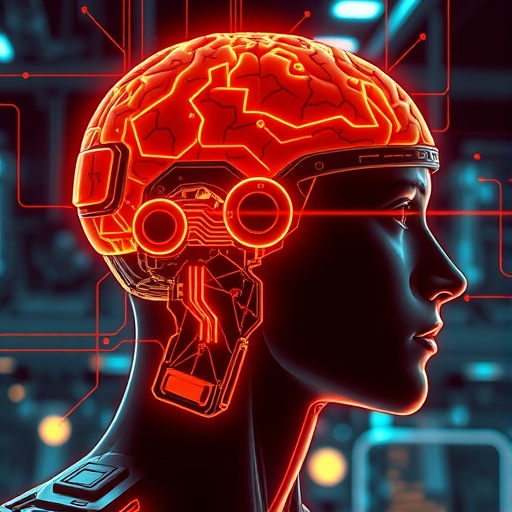In an era where technology intertwines with healthcare, the development of brain-computer interfaces (BCIs) stands as a beacon of hope for millions grappling with paralysis and life-altering neurogenic conditions. These sophisticated systems have made significant strides over the past two decades, enabling users to translate their neural intentions into actions. However, despite these advancements, a considerable hurdle remains: the need for BCI performance to substantially outweigh the associated costs and risks. This is where the integration of artificial intelligence (AI) comes into play, marking a transformative shift in how these interfaces can function effectively in real-world scenarios.
Recent research has explored the promising collaboration between BCIs and AI, specifically through the lens of shared autonomy. In this innovative approach, AI systems act as copilots, assisting BCI users to effectively achieve their goals. This concept not only enhances user experience but also significantly boosts performance, as evidenced by a groundbreaking study that has introduced an AI-BCI framework utilizing non-invasive electroencephalography (EEG) signals. Here, researchers have employed a novel hybrid adaptive decoding method that merges a convolutional neural network with a ReFIT-like Kalman filter, enabling users—even those with severe paralysis—to regain some level of control over digital environments.
The implications of such technology are vast. Healthy participants, along with individuals who experience conditions that affect motor function, were able to control computer cursors and robotic arms using decoded EEG signals. This advancement is pivotal, illustrating that the collaboration between human intention and machine efficiency can yield outcomes previously thought unattainable in neural rehabilitation and assistance. By enhancing the decoding accuracy and response times of the BCI using adaptive techniques, the study demonstrated a marked improvement in the user’s ability to interact with technology.
One of the most striking findings of the research was the performance enhancement observed in participants with paralysis. When paired with AI copilots, users experienced a staggering 3.9-times increase in their target hit rate during cursor control tasks. This breakthrough signifies a critical step forward in making BCI technology more viable for everyday use, primarily for those who depend on it for basic interactions with their environment. The AI copilots were not merely assistants but strategic partners, allowing users to navigate complex tasks with relative ease.
Moreover, the robotic arm functionality showcased the versatility of this integrated approach. The study demonstrated that, by utilizing an AI copilot, participants with paralysis were able to accomplish a pick-and-place task involving moving random blocks to specific locations—something that would have been impossible without the assistance of AI. This not only highlights the importance of collaboration between human cognitive processes and artificial intelligence but also opens doors for future applications in rehabilitation robotics and adaptive technologies.
The research underscores a significant paradigm shift in BCI design, where shared autonomy enables a more intuitive interaction model between users and machines. As AI systems evolve, their capacity to learn and adapt to user preferences and behaviors will only enrich the BCI ecosystem. The potential for these systems to integrate with home automation technologies and assistive devices hints at a future where individuals with disabilities can navigate their surroundings with unprecedented independence.
Furthermore, this research invites an intriguing dialogue on ethical considerations and inclusivity in technology design. As we delve deeper into the potential of AI-BCI systems, ensuring these technologies are accessible and equitable is paramount. Stakeholders must account for diverse demographic variables, accessibility needs, and usability factors when developing these advanced systems.
Ultimately, the marriage of AI and BCIs reflects an ever-growing trend in neuroscience and technology. The quest for seamless human-computer interaction is no longer a distant dream, but a tangible reality within our reach. As researchers continue to push the boundaries of what is possible with neural interfaces, the interplay of human cognition and artificial intelligence heralds a new era in assistive technology.
Looking ahead, the continual refinement of AI algorithms will likely enhance the intelligence of these copilots, making them even more adept at adapting to individual user needs. Imagine a future where BCIs are not only controlled by thoughts but also by an AI that learns and predicts users’ intentions, thereby allowing for a more fluid and natural interaction with machines. This evolution could revolutionize not just personal dynamics, but entire industrial and societal structures built around disability accessibility.
In conclusion, the intersection of AI and BCI technology stands as a landmark achievement in neuroscience, promising to redefine autonomy for individuals with severe disabilities. The research not only demonstrates a novel approach to motor control but also emphasizes the critical role of shared autonomy in improving BCI efficacy. As we embark on this journey towards increasingly sophisticated integrations, the prospects for enhanced autonomy and functionality in the lives of those with paralysis grow ever more hopeful. The future shines bright, as we stand on the precipice of a new chapter in human-machine interaction.
Subject of Research: Brain-Computer Interfaces and Artificial Intelligence Collaboration
Article Title: Brain–computer interface control with artificial intelligence copilots
Article References:
Lee, J.Y., Lee, S., Mishra, A. et al. Brain–computer interface control with artificial intelligence copilots.
Nat Mach Intell 7, 1510–1523 (2025). https://doi.org/10.1038/s42256-025-01090-y
Image Credits: AI Generated
DOI: https://doi.org/10.1038/s42256-025-01090-y
Keywords: Brain-computer interface, artificial intelligence, shared autonomy, electroencephalography, rehabilitation technology, human-computer interaction, assistive technology.




